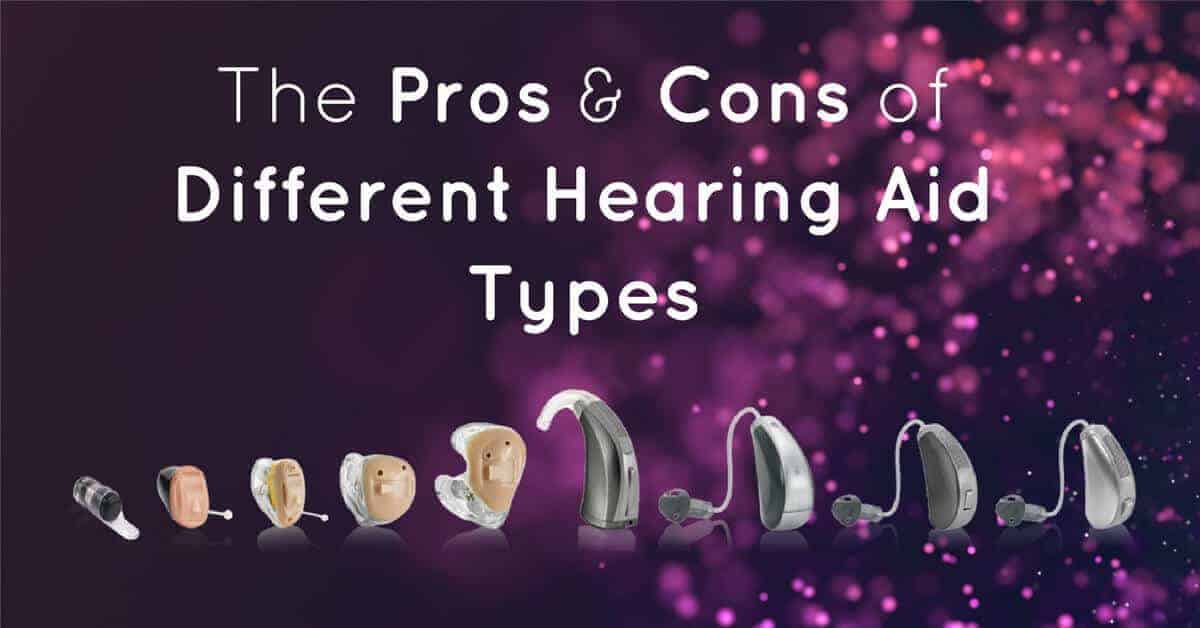Hearing aids are indispensable devices that have transformed the lives of countless individuals facing hearing impairments. These small yet powerful gadgets come in various styles and designs, each catering to different degrees of hearing loss and personal preferences. Within this article, we shall delve into the prevalent types of hearing aids accessible in the market and their respective merits and limitations. We aim to empower individuals with the information needed to make informed decisions when selecting the hearing aid that best meets their distinctive requirements.
Behind-the-Ear (BTE) Hearing Aids
Behind-the-Ear (BTE) hearing aids are the most popular and easily recognizable devices. Behind-the-Ear (BTE) hearing aids comprise a compact plastic casing, which is positioned behind the ear and linked to a custom earpiece that snugly fits inside the ear canal. This type of hearing aid is well-suited for individuals with mild to profound hearing loss.
Pros:
- Versatility: BTE devices can accommodate a wide range of hearing loss, from mild to severe.
- Durability: The casing protects the delicate components from external elements, increasing the device’s longevity.
- Additional Features: BTE hearing aids can incorporate advanced technologies like directional microphones and wireless connectivity.
- Comfort: The larger design provides a comfortable fit, making them easier to handle, especially for older users.
Cons:
- Visibility: Though modern BTE designs are more discreet, some users may still feel conscious of the visible component behind the ear.
- Wind Noise: The placement of the microphone can result in wind noise interference in windy conditions.
- Feedback: Sometimes, users may experience feedback or whistling due to sound leakage between the earpiece and the microphone.
In-the-Ear (ITE) Hearing Aids
In-the-Ear (ITE) hearing aids are custom-made to fit entirely within the outer ear. They come in different sizes, with the larger ones filling the entire bowl-shaped area of the ear (Full Shell) and the smaller ones fitting partially into the ear (Half Shell or In-the-Canal).
Pros:
- Discreetness: ITE hearing aids are less noticeable than BTE models as they sit within the ear, making them cosmetically appealing.
- Accessibility: The larger size allows for additional features like volume controls and larger batteries, enhancing usability.
- Ease of Handling: Their larger size makes them easier to insert and remove, especially for individuals with dexterity issues.
Cons:
- Size Limitation: Individuals with smaller ear canals may find ITE hearing aids uncomfortable or less secure in their ears.
- Earwax and Moisture: The custom fit can lead to earwax and moisture accumulation, requiring regular cleaning and maintenance.
- Limited Amplification: The small size may limit the amplification provided, making them less suitable for severe hearing loss.
Receiver-in-Canal (RIC) Hearing Aids
Receiver-in-Canal (RIC) hearing aids, also known as Receiver-in-the-Ear (RITE) hearing aids, are similar in design to BTE devices. However, instead of the speaker being housed in the casing, it is placed directly in the ear canal, connected by a thin wire.
Pros:
- Discretion: RIC hearing aids are less visible than traditional BTE aids, offering a more inconspicuous appearance.
- Comfort: The open-fit design allows for natural sound perception and reduces the “occlusion effect,” making them comfortable to wear.
- Versatility: RIC hearing aids are suitable for various degrees of hearing loss.
Cons:
- Maintenance: The thin wire connecting the casing to the earpiece may be prone to damage and require careful handling.
- Earwax Issues: The speaker’s proximity to the ear canal may lead to more frequent clogging due to earwax accumulation.
- Limited Amplification: RIC devices may not provide enough amplification for individuals with profound hearing loss.
Completely-in-Canal (CIC) Hearing Aids
Completely-in-Canal (CIC) hearing aids are custom-made to fit deep within the ear canal, rendering them nearly invisible. They are ideal for individuals with mild to moderate hearing loss.
Pros:
- Cosmetically Appealing: CIC hearing aids are the most discreet type, virtually hidden inside the ear canal.
- Natural Sound: The deep placement ensures a more natural sound perception and reduces the “plugged ear” feeling.
- Reduced Wind Noise: The microphone’s location deep in the ear canal helps minimize wind noise interference.
Cons:
- Limited Features: CIC devices have limited space for manual controls and additional features due to their small size.
- Maintenance: Frequent insertion and removal may lead to higher maintenance requirements and potential earwax buildup.
- Not Suitable for All: Individuals with narrow or curved ear canals may find it challenging to wear CIC hearing aids comfortably.
In-the-Canal (ITC) Hearing Aids
In-the-Canal (ITC) hearing aids are custom-made to fit partially in the ear canal, with a small portion visible in the outer ear.
Pros:
- Discreetness: ITC hearing aids are less visible than BTE models and offer a more natural appearance.
- Features: ITC devices can accommodate more features than CIC hearing aids, such as volume controls and directional microphones.
- Versatility: ITC hearing aids are suitable for a broader range of hearing loss than CIC devices.
Cons:
- Handling Difficulty: The small size of ITC devices might pose handling challenges for some users, especially those with dexterity issues.
- Earwax Accumulation: ITC aids may still be susceptible to earwax accumulation, though less than CIC devices.
- Wind Noise: The positioning of the microphone can make ITC devices more prone to wind noise interference.
Conclusion
Choosing the right hearing aid is a personal decision that depends on individual hearing needs, lifestyles, and preferences. Each type of hearing aid offers distinct advantages and disadvantages, and consulting with an audiologist is crucial to determining the most suitable device for your specific requirements.
The advancements in hearing aid technology have significantly improved sound quality, comfort, and ease of use, allowing individuals with hearing impairments to regain their hearing ability and actively participate in the world around them. By understanding the pros and cons of each hearing aid design, users can make informed choices and find a device that best suits their needs, ultimately leading to a better quality of life and improved communication.



